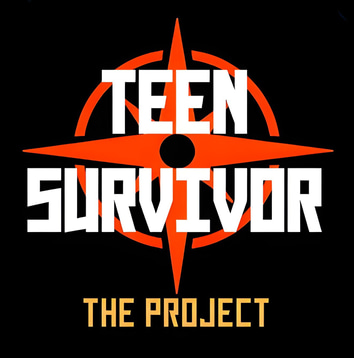Exercises to Stay Alert & Level Up situational awareness
Discover effective exercises to help you stay alert and enhance your ability to notice what others miss . Level up your situational awareness and become a pro at being present in every moment.
PREPAREDNESS CHALLENGESLIFE SKILLS AND CONFIDENCE BUILDING
12/26/20245 min read


STOP: BEFORE YOU READ ON, STUDY THE PICTURE ABOVE FOR 30 SECONDS!!
Take a good look. Observe every detail you can. When you’re ready, scroll down and answer the following questions:
How many people were in the scene?
How many cars were in the scene?
What color was the backpack one person was carrying?
What color were the boots the persons were wearing?
What color were the gloves one person was wearing?
Was there a person with a beard?
How many animals were in the image?
What color were the cars
What was the licence plate number of the car in front?
How did you do? Did you answer all the questions? Then maybe you are already a person with high situational awareness. You did not do as sharp as you thought? That’s okay—situational awareness is a skill anyone can build with practice.
In this guide, we’ve turned situational awareness into a fun, interactive challenge with exercises and games. Whether it’s staying safe in a busy hallway, being alert in unfamiliar places, or preparing for emergencies, these exercises will help you become more observant and confident in any situation. Ready to level up? Let’s get started!
1. Observation Relay
What You’ll Need:
Nothing but your eyes and a good memory.
How It Works:
Take a walk through a park, school, or mall with a friend or family member. Imagine there are zombies about to attack you have to find people who could help you, animals to be rescued, buildings that could be safe or the best way out.
Each person gets 30 seconds to observe the surroundings.
Afterward, take turns describing as many details as you can remember. Points for accuracy!
Why It Helps:
Trains your brain to notice details quickly.
Improves your ability to recall visual information under pressure.
2. Sound Mapping
What You’ll Need:
A notebook and pen.
How It Works:
Sit in a quiet place or even a crowded area.
Close your eyes and list every sound you hear within five minutes (e.g., birds chirping, footsteps, distant conversations).
Compare notes with a friend to see who picked up the most sounds.
Why It Helps:
Sharpens your auditory perception.
Makes you more attuned to changes in your environment.
3. "What Changed?" Game
What You’ll Need:
A partner and a small area to work with.
How It Works:
Have a partner set up a small scene with objects (e.g., a desk or table).
Observe the scene for 30 seconds, then leave the room.
Your partner changes 3 small details (e.g., moves a cup, removes a book).
Return and identify what’s different.
Why It Helps:
Enhances memory and attention to detail.
Boosts your ability to spot subtle changes quickly.
4. Peripheral Vision Challenge
What You’ll Need:
Small objects and a friend.
How It Works:
Sit or stand facing forward.
Have a friend slowly move an object (e.g., a pencil) from behind your head into your peripheral vision.
Practice spotting it without turning your head.
Why It Helps:
Strengthens your ability to detect motion and activity outside your direct line of sight.
5. Stranger Descriptions
What You’ll Need:
A public place and your imagination.
How It Works:
While sitting in a park, cafe, or library, pick a person and observe them (discreetly!).
After they leave, describe their appearance, behavior, or what they were carrying to a friend.
Why It Helps:
Improves your ability to catalog details about people, which can be crucial in emergencies.
6. "Count the Exits" Drill
What You’ll Need:
Any indoor space.
How It Works:
Walk into a room or building and, without being obvious, count all the exits.
Note the locations of emergency supplies (e.g., fire extinguishers or first aid kits).
Why It Helps:
Prepares you for emergencies by making exit strategies second nature.
7. Spot the Odd One Out
What You’ll Need:
Everyday scenes (or images).
How It Works:
Look at a cluttered space or photo (e.g., your desk or a group photo).
Spot anything that looks unusual or out of place.
Why It Helps:
Trains your mind to detect anomalies that could signal danger or opportunities.
8. Role-Playing Scenarios
What You’ll Need:
Friends and your creativity.
How It Works:
Create mock survival or emergency scenarios (e.g., "You’re lost in a forest," or "There’s a fire in the building").
Role-play how you’d handle the situation while staying aware of your surroundings.
Why It Helps:
Enhances decision-making under pressure.
Makes situational awareness feel practical and fun.
9. Memory Snapshot
What You’ll Need:
A phone or tablet.
How It Works:
Take a photo of a busy scene (e.g., a park or street corner).
Look at the image for 30 seconds, then put it away.
Write down everything you remember.
Why It Helps:
Strengthens observational memory and recall.
10. "What’s Missing?" Test
What You’ll Need:
A collection of small items.
How It Works:
Place 20-30 small objects on a table.
Study them for a minute, then have a friend remove one item.
Identify what’s missing.
Why It Helps:
Builds focus and short-term memory.
Conclusion
Situational awareness doesn’t have to be boring. With these exercises and games, you can sharpen your senses, improve your memory, and stay one step ahead in any situation. Practice regularly, and soon, noticing the details around you will become second nature—an essential skill for safety, survival, and everyday life. Ready to take on the challenge? Start practicing today and level up your awareness skills!

















Teen Survivor Project
Cheat code for young preppers
© 2024. All rights reserved.
